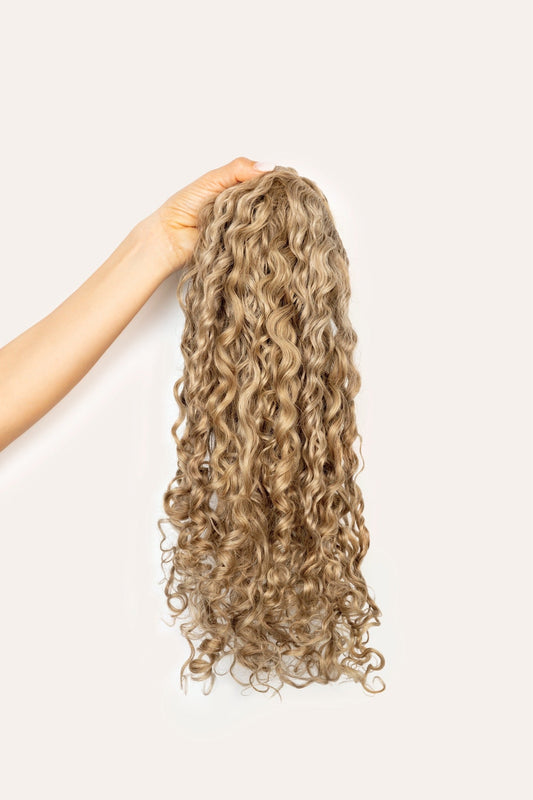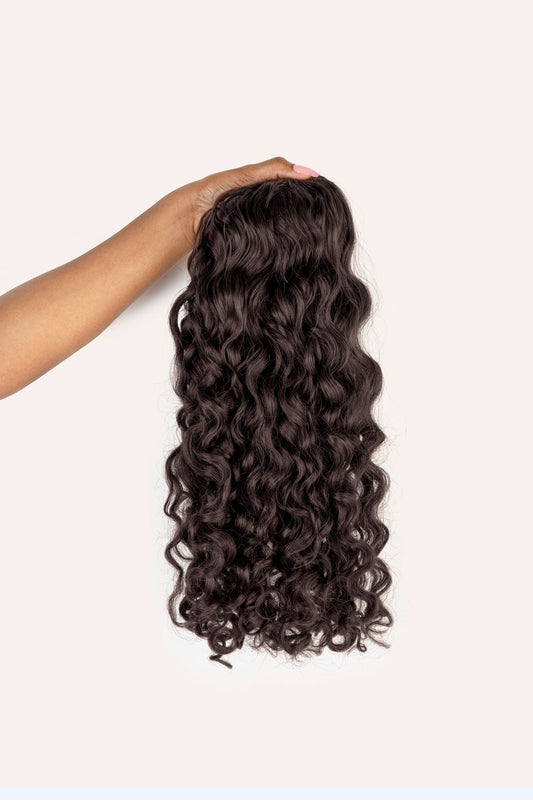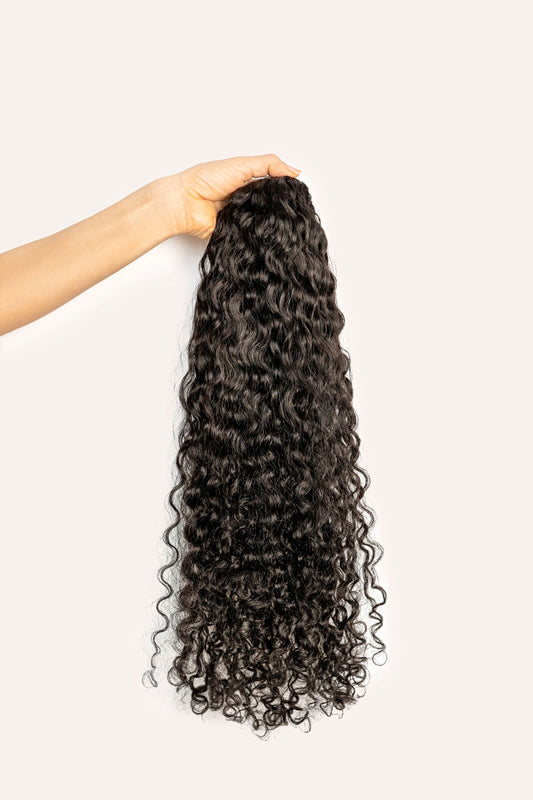
We’ve all been there. The sun is up, the sky is blue. We’re headed out - maybe for a picnic, a first date, or just a casual hang with friends. We’re excited, we’ve got our outfit prepped, and everything seems perfectly aligned.
And then we look in the mirror, and our hair looks like its own frizzy, chaotic planet. Undefined, ready to take over, and definitely not down for the chill hang we’ve planned.
With spring here and summer on the way, humidity has officially entered back into the discussion, and it’s a big topic for us curly ladies. Humidity can wreak havoc on our curls, and unless you have a weather control device we don’t know about, it’s a reality we all have to deal with. So let’s dive into exactly what is going on with the moisture in the air, and how best to handle it with natural curly hair.
What is humidity?
Though it may seem more complicated, humidity is just moisture that’s in the air. Sometimes you can feel it (we’re looking at you, Florida summer), and sometimes it’s more subtle. But in the end, it’s pretty simple: The more droplets of moisture in the air, the more you’ll notice a change.
How does it affect curly hair?
Depending on your hair type and health and comfort with frizz, humidity can be anywhere from your best friend to your biggest nightmare. Before we get into it, let’s do a little hair science refresher.
Each strand of hair is made up of several microscopic layers. The outermost layer of your hair strand is called the cuticle. It is made of overlapping cells, and is responsible for protecting your hair as its barrier. When your hair is well hydrated, the cuticle opens to let in moisture and then closes once it has absorbed all it needs, thus locking treasured moisture in.
But if your hair strands are high porosity or damaged, the cuticle protecting your hair may be raised. When this is the case, moisture enters the hair shaft and exits just as quickly, which leads to swelling. This causes curls to separate from our treasured curl clumps, and leads to messy, frizzy chaos.
How can we combat it with styling?
We know, we know, we’ve been talking about how destructive moisture can be. But in order to look your best and make the humidity your friend, you’re actually going to want to ramp up the moisture. This is because curly hair lends towards dryness in the first place, and if you’ve locked in the right balance, humidity won’t be able to do as much damage.
The first way to move forward in being friends with humidity is adding a little self care, and incorporating a deep conditioning routine to your week. This will help your strands to lock moisture in, and maintain hair health overall.
As far as styling, while you’re still in the shower, leave a bit of conditioner in instead of rinsing it all out. If you want to really up the ante, add a leave in conditioner to your routine before your curl cream or gel.
If your hair tolerates oils or serums, these can also be a great way to help lay your cuticle flat, keep frizz at a minimum and keep your curls looking gorgeous and healthy. We recommend looking for a serum that doesn’t use silicones, so that you don’t have sacrifice volume or have to aggressively clarify later.
When you’ve finished applying your products, make sure to use a microfiber towel. The last thing you need is to aggravate that cuticle more!
And, of course, treat yourself to a satin bonnet or pillowcase, so that you don’t undo all of this hard work while sleeping.
Most importantly, embrace it!
Of course, we’re all for getting the most definition possible and learning everything we can about humidity. But we also want to encourage you to love your hair, in all of its states. If you’ve found yourself on a hot day and there’s just nothing that’s working, work with your hair, not against it! You’ve done the work, and made sure that your hair is healthy. Now settle into your glorious voluminous mane, and head out looking confident and gorgeous.
Did we miss anything? Let us know!




